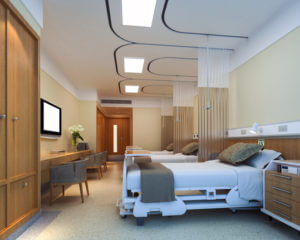 Companies nationwide are getting behind emerging technologies as they move into the world of internet-connected LED lighting. Recent developments have illuminated the importance of offering internet-controlled, smart lighting design systems for commercial properties; but, because smart lighting design is so much more than switching out a lightbulb, collaborating with networking experts and lighting design engineers becomes of high importance for a secure building environment.
Companies nationwide are getting behind emerging technologies as they move into the world of internet-connected LED lighting. Recent developments have illuminated the importance of offering internet-controlled, smart lighting design systems for commercial properties; but, because smart lighting design is so much more than switching out a lightbulb, collaborating with networking experts and lighting design engineers becomes of high importance for a secure building environment.
What is Smart Lighting Design?
Based on LED lighting design technology, smart lighting is becoming a fully tunable, controllable and intuitive operative system. This “lighting-on-demand” solution allows for quality lighting whenever and wherever.
LEDs Magazine describes smart solid-state lighting (SSL):
For those of you who might have just awakened from a Rip Van Winkle slumber: Intelligent lighting leverages the digital nature of LEDs which, as semiconductors, lend themselves readily to network connectivity. Thus, vendors are pushing the notion of tying everything from ceiling lamps to highway luminaires in to web-based controls and networks that allow individuals and central managers to switch lights on and off, adjust brightness, and even change color and color temperature, all from a remote point via a phone, gadget, computer, or other connected device.
Human-Centric Lighting Design
One example of smart lighting that’s showing up in schools, hospitals and other industrial businesses, is called human-centric lighting (HCL). Also known as circadian lighting, HCL changes colors and color temperatures throughout the day and night. HCL can match lighting needs of occupants. Evidence shows correlation between light colors and states. Warmer-temperatures like oranges and reds might provide a more relaxed state for patients in a hospital. While cooler-temperatures like bluish-white lights could stimulate alertness. This would be used in the morning in an office setting or in a university classrooms.
Different building environments will have different goals. For example, sports venues may be mostly concerned with providing appropriate light for the needs of the event; office buildings and hotels could be looking for energy efficiency solutions; a theater or restaurant might be primarily concerned with enhancing the emotional impact and aesthetics through their lighting system.
Because of the wide variety of applications, at KMB, you’ll never see a “one-size-fits-all” approach.
Lighting Design Engineering Services with KMB
Smart lighting technology will continue to advance. Businesses will have to link up networked lighting systems into their BMS (building management system). As a result, lighting will become a diverse experience that provides solutions for aesthetics, sustainability and function.
Whether you’re outfitting a skyscraper top-to-bottom with a network of internet-based automation for tenants to tap into for intelligent lighting controls or adding a PIR (passive infrared sensor) for motion sensors in an office, our lighting engineers will employ functional and innovative design elements to express your specific needs and vision.
Contact the experts at KMB Design Group to learn more about incorporating sustainable and smart lighting designs into your next project!